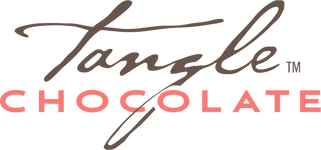All About Milk Chocolate
Apr 14, 2022
Tangle Chocolate recently began offering a creamy, deep, 52% cacao MILK chocolate for the many folks out there who haven’t yet made the switch to dark (we refer to our milk chocolate as the gateway chocolate, so beware!). Want to know a bit about the process involved in developing our milk chocolate formula as well as a thumbnail history of milk chocolate? Keep reading.
THE HISTORY
You know that dark chocolate has been around for millennia. But the addition of milk to chocolate happened relatively recently. Swiss chocolatier Daniel Peter, a Swiss chocolate maker, is generally credited for first adding dried milk powder to chocolate in 1876. As with so many “firsts” in the world of chocolate, it’s probably impossible to know if Peter deserves the credit for the invention or instead for the publicity of the invention. Two white men are often noted as the inventors of bean-to-bar chocolate, when many people, notably women of color, had been making bean-to-bar chocolate throughout the centuries.
In the US, the Hershey company plays a major role in milk chocolate’s history. When Milton Hershey began making milk chocolate, the story goes that refrigeration was harder to come by and less dependable than it is today, and of course milk needs refrigeration. In an effort to extend milk chocolate’s shelf life, Hershey began waiting until the fresh milk had just begun to spoil before making it into milk powder (an alternative version of the story is that the milk just often did begin to spoil before he could get to it). Spoiled milk has a type of acid in it called butyric acid—it’s the same kind of acid found in vomit—so Hershey’s milk chocolate had, and has, a very slight rancid flavor. Allegedly, the Hershey company admits to still using a process that leads to a bit of butyric acid being in their milk chocolate even though problems with refrigeration no longer exist. Because the vast majority of us grew up eating Hershey chocolate, we don’t call out that flavor and instead think of Hershey’s as being just the way chocolate tastes. (I called various departments in the company several times to get to the bottom of these assertions, but no one would answer my questions.)
One reason that Tangle’s milk chocolate tastes different from Hershey’s milk chocolate is that we don’t use butyric acid!
MAKING TANGLE’S MILK CHOCOLATE
Since I converted to consuming fine, dark, bean-to-bar chocolate, the milk chocolate of my childhood is no longer appealing. But, after polling my customers, I became convinced that followers of milk chocolate want and need a choice that is made to the same flavor and sustainability standards as Tangle’s dark chocolate.
One of the problems with developing a formula for milk chocolate is having the chocolate be the right consistency to grind and mold. Because milk powder is added to the cocoa nibs and sugar (and those are the only two ingredients in our dark chocolate), the chocolate liquor becomes super thick; in fact, it’s too thick to be functional. Chocolate makers have to add extra fat of some sort in order to lower its viscosity. The most common supplemental fats used in commodity (mass-produced) chocolate are soy lecithin and palm oil. A superior choice by far, however, is cocoa butter. It is bioidentical to the fat already in cocoa beans which is, well, cocoa butter, it has a better mouthfeel, and it is sustainable. However, it’s far more expensive, so it will be chosen by chocolate companies like Tangle who value quality.
Where to get cocoa butter to add to my chocolate? My first thought was to make my own, using the same beans I use to make the chocolate. Research pointed to two equipment possibilities. I bought and tried one, and the giant mess it made as well as the extremely low yield of usable cocoa butter per pound of beans made me send the machine right back. The other machine was no better, and the manufacturers I spoke with ended up recommending some equipment that I hope will be in Tangle’s budget a bit down the road.
I then turned to organic cocoa butter I could buy ready made. I must have tried six or seven kinds looking for one that went just right with my Guatemalan beans. Some cocoa butter is unrefined, meaning it has an odor and flavor that can range from semi-mild to downright overpowering. And refined cocoa butters need to retain all the good properties of the cocoa bean while losing everything that would mask or interfere with the natural flavors of the cocoa beans that I’m trying to enhance. I did finally find one that I’m happy with. Whew.
Sourcing the milk also included some twists and turns. It has to be milk powder, not liquid milk, because anything with water in it will cause chocolate to emulsify. Efforts to find a local milk powder made from some of our delicious local milk failed, although I did plant the seed with some dairy farmers to please make milk powder in the future. After trying a number of different kinds of available organic milk powder, I landed on one that is unbelievably fresh tasting, sweet and creamy.
All that was left was tweaking the proportions of milk, cacao, sugar and cocoa butter, a fun challenge! Tangle’s 52% Milk Chocolate is the result, a rich and delicious dark milk chocolate that is creamy and sweet, but not too sweet. Please try it plain or in our other varieties: coffee infused, pink Himalayan salt, Icelandic smoked birch salt, or Welsh smoked oak salt. Let me know what you think!


